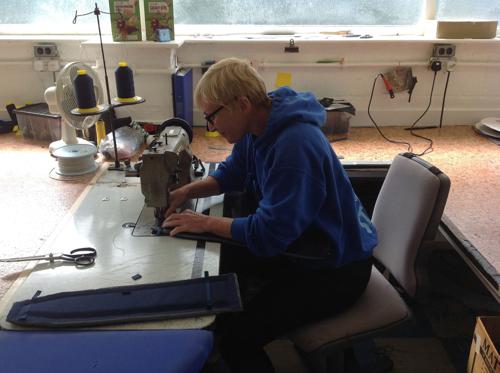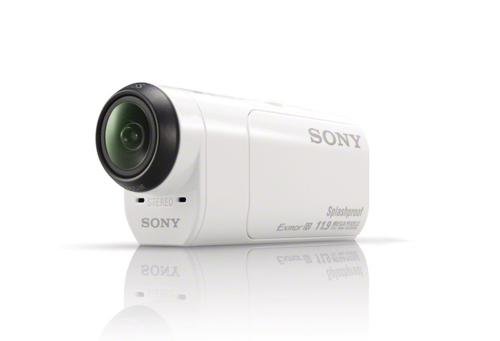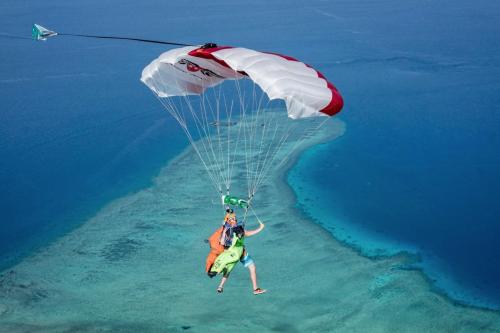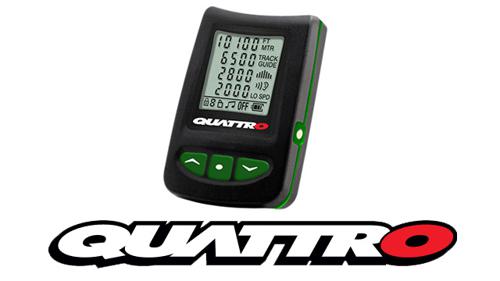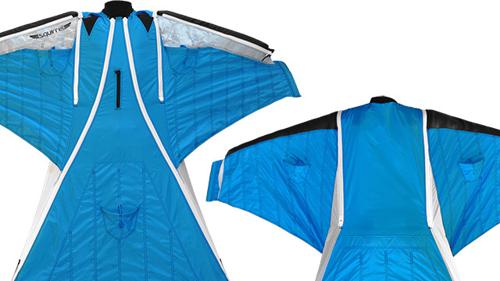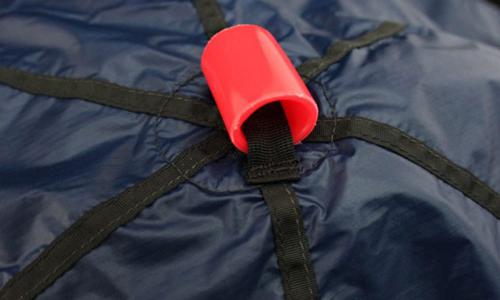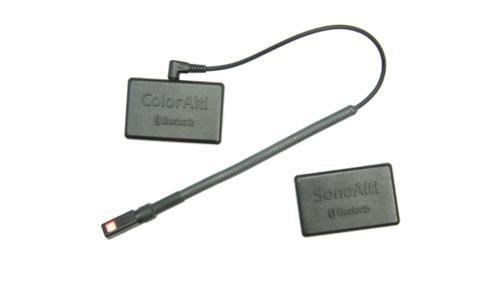Harnesses: Fitting to your body and effects to consider...
During part 1 (take a look here) we described the different parts of a skydiving harness and the materials used on it. On the second part we are a bit more practical. Here we will go through most (all?) harness options and designs, independently of the manufacturer. We will see what they are and which purpose they have, so you can decide if they are for you or not. Most manufacturers are open to offer non standard options if the buyer asks about it. However, there is a significant number of options that are specific for a subgroup of manufacturers, and therefore you can't freely mix and match every single option explained here.
To keep things ordered we will go from top to bottom of the harness. Let's go!
Risers
Going from top to bottom, the first thing you find are the main risers. As simple as they seem to be, they have a significant number of options.
Webbing
The first thing to decide is which type of webbing you want on your risers. In this time and age there is little debate: If you are not an outlier you'll want type 17 risers. There are multiple reasons. The main technical reason is that it makes it easier to pull down the slider to stow it behind your head. Type 17 is also preferred to type 8 because of its lower bulk and cooler appearance (which is, of course, not a technical reason). It typically comes paired with minirings, which are also less bulky than traditional rings and "cool" looking.
Regarding webbing, a second option is to have risers sewed in half, reducing its cross section and drag. This option is only available in type 17 risers and has a very specific audience: hardcore swoopers. They need to reduce drag as much as possible, to squeeze out all the performance in their canopies. If you are not a hardcore swooper you can ignore this option. Moreover, some manufacturers advise against these low profile risers if you are going to deploy at terminal speed.
The last bit regarding webbing on risers is its length. 21" (53 cm) is the standard length of many manufacturers. As usual, check first with them to ensure that is true. You can also order them shorter (if you have short arms) or longer. It is normally recommended to have them as long as possible, but allowing to reach the slider. That's because with longer risers the canopy can "open up" a bit more, and you'll have more range in all your controls, particularly in toggles. That also means that you can stall your canopy easier, so the whole system has to be in balance.
Diving loops
Diving loops are nowadays kind of standard, and even rigs targeted at newly licensed skydivers have them. There are, however almost as many kinds as manufacturers.
The simplest type is a loop of type 17 webbing sewed close to the top of the front risers. These loops are easy to manufacture, cheap, and play no role on hooking your main canopy. On the flip side, they lay flat against the risers, making them more difficult to grab and causing distractions, and are harder on the fingers.
Another common type of loop uses tubular webbing. The advantage of this type of loop over the simple type 17 is two-fold: It is easier on the fingers, allowing to hold the front risers longer, and the loop tends to stay open, making it easier to grab. Sometimes these loops have extra material inside (stiffeners or bungee cords) to ensure they stay open when you need them. It is also possible that the tubular webbing is sewed in the inside part of a regular type 17 loop.
In recent years the so called "louie" loops have become more popular. These loops have a double layer of webbing, and stay easily open. But their most distinctive feature is that they wrap the loop used to connect the canopy to the risers. That implies 2 things: First and foremost, they require more attention when connecting a canopy. The soft links (these loops do not accept hard links) have to go through the diving loops and the connecting loops. Routing the soft links just through the diving loops can have serious consequences. The stitching could break and the whole line group could be released. The advantage of these loops is that it allows the canopy pilot to pull from the highest point of the risers, giving more range and a more comfortable pull.
Diving loop with tubular webbing on the inside for added comfort and to keep it open.
Louie loop. Note how the soft link has to go through the link loop and the dive loop.
The last thing to comment here is that CRW dogs typically have dive blocks instead of dive loops. Dive blocks are easier to grab and release, which makes them more useful than loops in that environment.
Toggles
Manufacturing techniques vary wildly between different rigs. So much, that we won't cover them in too much detail here. What is important is that the toggles stay secured until you grab them. To the best of my knowledge, that is true for every modern reputable manufacturer. Nevertheless, we can analyze the different components/options, even though each manufacturer uses its own technique and rarely offers changes to it.
Brake line retainer: That's the part of the toggle that goes through the cat's eye in the brake lines. Normally it is a "hardened" piece made using multiple layers of webbing. Some manufacturers use a straight pin instead. While this seems like a good idea, it opens the door to misrigging, since the pin fits through the guide ring. That could result in the brake line pulling on the pin and its pocket, which could be easily damaged.
Toggle retainers: The toggles need to be secured in place. This is achieved with either stiffer parts inserted in pockets in the risers (just like the brake line retainer), straight pins inserted in tighter pockets, or snaps. The number of stiff parts and pins varies between 2 and 3. The orientation also varies. That is why some cases require an upwards motion before pulling the toggles down to release them. Should snaps be used, it is important to remark that the snaps should perforate an extra piece of webbing sewed in the risers, not the webbing of the risers itself.
Slack retainers: These are loops sewed on the back side of the back risers. They can be a simple piece of tape (which tend to let the slack a bit more loose), or a elastic (which secures the slack better, but makes the slack stowing more tedious).
Toggle with stiffener on top and pin on bottom, tape slack retainers and closed top pocket. Other options are stiffeners on top on bottom, pin on top, extra stiffener pointing downwards on top, elastic retainers and open (at the top) top pocket.
Additional guide rings
Some riser manufactures have the option of placing an extra set of guide rings at the top of the risers. This way, during full flight, the brake lines go through this set of rings, but not through the normal guide rings. To stow the brakes the cat's eye has to go through the normal rings, the toggle has to lock the brake in place, and the excess can be normally stowed. The benefit of this option is to have a smoother transition to rears, and reduce the length that the brake line is traveling, since it doesn't have to go down to the guide ring and up again towards wherever the pilot has his/her hands. If you are into canopy piloting, or if you need to have very short brake lines, this might be an interesting option for you.
3 rings
The last set of options in the risers is the 3 rings system. The first thing to decide here is if you are happy with today's standard: Minirings. The vast majority of sport rigs have them today, mostly for aesthetic reasons. They work just fine, and you rarely see rigs with large rings nowadays. But the pulley minirings form is slightly less effective than in large rings. That means that the force needed during cutaway might be higher. Modern risers have extra housings for the cutaway cable -sometimes with teflon inserts-, to avoid them from being pinched in twists, and make cutaways more difficult. The usage of these housings in modern risers offsets the extra force required to cutaway with minirings in most cases. Another thing to consider is that typically minirings come with type 17 risers, and large rings with type 8 risers, even though other combinations are possible. So the type of webbing you want on your risers might tip the balance for you, if you are undecided.
Aerodyne, to keep the aesthetics of minirings but without compromising on pull forces, designed a modified 3-ring release system. The "miniforce" rings system is essentially the same as other minirings systems, but with an enlarged middle ring. That improves the pulley efficiency and reduces the load in the white loop. If you want to use these risers in a container not manufactured by Aerodyne, check first with your manufacturer about component compatibility. We will talk a bit more about this at the end of the section.
Aerodyne's "miniforce" 3-rings system.
Lastly, you can decide the hardware finish. There are 3 main options in the market:
Cadmium plated steel: This is possibly the oldest type of hardware used in skydiving that is still sold today. It works well will all kinds of webbing, the plating offers corrosion protection and it is generally cheaper, despite the extra costs associated to dealing with cadmium's toxicity. However, the plating can flake off over years, and then corrosion might happen, depending on the environmental conditions and how you treat your gear. Moreover, it is not shiny, which goes against one of the (sadly) first principles of skydiving: You have to look cool.
Cadmium plated steel 3-rings system after more than 1000 jumps.
Stainless steel: This kind of hardware is the most commonly used today. It offers better corrosion protection than plated steel, since there is not plating that can flake off. It is and stays shiny. And it slips more. 3-rings release system can lose about 5% efficiency (more force transmitted to the small ring) because of the reduced friction. Arguably, in well manufactured miniring systems, it doesn't play a role.
Stainless steel 3-rings system after 100 jumps.
Black hardware: This is the latest addition in hardware finish. It is steel hardware with an oxide layer, that gives it its matte black color. It is relatively recent, so field experience is more limited than stainless steel and cadmium plated steel. Some people claim that after hundreds of jumps it doesn't have significant usage marks. However, at least in some cases, marks are pretty visible (see also the pictures of chest rings).
Black 3-rings system after 100 jumps.
The chosen finish will affect the 3-rings system, buckles, chest and hip rings, and RSL shackles. However, whatever you choose, it won't affect the grommets or housings of your rig. Maybe something to consider.
Some people mix risers with different hardware materials and from different manufacturers. This works fine in most cases. However, you are stacking the odds against you if you are not careful. On one hand dimensions and placement of all the parts should match. RSL ring side, cutaway cable inserts and length of cable, large ring dimensions -that can be different even among minirings systems-, large ring placement -higher or lower in the MLW-. All these are things to consider. There have been already fatalities rooted in a poor mix of components (reverse risers on a Javelin container). On the other hand, NAS-804, the specification required by TSO-C23b, states "The use of dissimilar metals, especially brass, copper, or steel in intimate metal-to-metal contact with aluminum or aluminum alloy, shall be avoided, whenever possible.". So, in principle, unless you know better, you should avoid mixing types for extended periods of time, as you might cause premature degradation of your hardware. Also, "miniforce" risers work fine with Aerodyne rigs. But the enlarged middle ring might not release cleanly in other rigs. Check compatibility with the manufacturer of your rig before using that mix.
Chest rings
Exploring down our harness we get to the chest strap junction. Most manufacturers -but not all- add chest rings to articulate their harness, either by default, or as an option. A fully articulated harness (with chest and hip rings) is supposed to be more comfortable, as the webbing doesn't need to bend and fold as much as a non-articulated harness. However, the chest is an area where these deformations are not really pronounced. As much as your body moves and twists in freefall, your upper torso stays pretty rigid. Nevertheless, chest rings help to avoid awkward and uncomfortable webbing twisting when the harness has been made for a larger person than the wearer. In these cases, the tendency is to overtighten the chest strap to compensate and secure better the jumper. That brings both chest junction together more than they should, and without rings the webbing would be unnaturally bent at that point. Of course, in an ideal world, every skydiver would have a harness that fits them properly, so this would never happen.
Besides the arguable increase in comfort, chest rings are an excellent investment if, for whatever reason, the harness needs to be resized or repaired in the lower MLW. With chest rings the area affected is reduced to the webbing between the chest and hip rings. Without chest rings, the amount of work (and price) for this would be significantly higher, since the MLW is sewed to more components that would need resewing or replacement.
Like the 3-rings release system, the chest rings can have different finish. More unique to chest rings is their orientation, and its influence on fitting and chest strap width. The chest rings used in every modern harness/container system are always very similar to the large ring in the 3-rings release system. The only possible difference is the bend in the slot where the MLW is threaded, which might or might not be present. In the chest, manufacturers orient the ring in 2 different ways: With the threading slot towards the upper MLW, or towards the chest strap. There are a few subtle implications:
Rings with a vertical orientation (threading slot towards upper MLW) accept more naturally type 17 chest straps. In roughly half the circumference of the ring, the manufacturer has to accomodate the lower MLW and the chest strap, so commonly type 17 is used for the chest strap. That doesn't mean that type 8 is not possible. It is, but being it more bulky, it is less convenient.
Rings with a horizontal orientation (threading slot towards chest strap) accept more naturally type 8 chest straps. I have yet to see this configuration with type 17, but it is, in theory, possible. Looks would be compromised for no reason though, so it is unlikely you'll see it either. Another thing to consider with this configuration is the range of motion of the upper MLW. Here, it can slide to the sides easier (the ring stays in place and the upper MLW can slide on it) than in vertical configuration (where the whole ring has to move and overcome the friction with the chest strap and the lower MLW). What that means is that when flying steep head down angles, the harness can slip down (up?) your shoulders easier than in other cases.
Black chest ring after 1000 jumps. Note the shiny side on the right.
Chest ring with the threading slot towards the upper MLW and a type 17 chest strap.
The last option to consider regarding chest rings is the use of padding under the rings. Not many manufacturers offer it, but it is nevertheless possible.
Chest ring with the threading slot towards the type 8 chest strap. The additional tape keeps the padding secured under the ring.
Chest strap
As we mentioned already, there are two chest strap widths to choose from. Regarding strength, there is no real difference, since the weakest point is the friction adapter, which is rated at 500 lbs independently of the width. Type 17 is less bulky and has less drag, which some swoopers would care about. It is also true that these same swoopers, the ones that can notice the difference, would completely remove their chest strap after opening and stow it away (while using a belly band to secure themselves). So this is also a moot point. At the end, this is one of these options that are completely a matter a personal taste.
Another option regarding chest straps is their length. Most manufacturers have a standard length, which is typically around 19" (48cm). Normally this can be extended at no cost. Long chest straps allow the jumper to open up their harness and therefore their canopy, for increased efficiency. With a long chest strap it is also possible to lean forward during landing for a more active canopy piloting position. Regardless the length of your chest strap, if you are going to loosen it as much as you can, you should pay attention to its termination. Type 8 chest straps have a folded end that acts as a stopper and prevents the chest strap from being accidentally unthreaded. Type 17 terminations are sometimes not that effective, depending on how it was done.
Termination of a type 8 chest strap. The tip has 4 layers to make it stiffer and the tab prevents the strap from being accidentally removed.
Terminations of type 17 chest straps. The top picture has an extra tape, that creates a tab. The bottom picture has a stiffener at the tip. Note how fuzzy they are, specially the one on top. That's the effect of rubber instead of the normal elastic bands.
Lastly, some manufacturers offer wide webbing loops in the chest strap to stow it. That replaces the default elastic bands, that tend to stretch over time loosing effectiveness, and can also get lost. This option is more common on type 17 chest straps than on type 8. Whatever you choose (elastic band or webbing loop) avoid rubber bands anywhere in contact with webbing. Rubber bands are fairly abrasive. As a result they will weaken your webbing and make it look fuzzier.
Handles
The next decision point coming down the harness affects the cutaway and reserve handles. The most common combination is a pillow for the right side (cutaway), and a metal ring for the reserve ripcord. But there are variations.
Pillow handles are popular among freeflyers, because they are less snag prone than other options. Many of them use pillows for both the cutaway and reserve handles. The obvious downside, is that they make grabbing and pulling them more complicated. A pillow requires your whole hand to grab it. On top of that, it has a similar texture to your jumpsuit fabric, so if you are not looking and you have a loose suit you can grab part of your jumpsuit by mistake. To make them easier to grab, some manufacturers make sure they have a harder core. Others make them extra fat. And others sew an extra layer of a less slippery material. You can also embroider pillows for extra "flashiness", which is not possible with other types of handles.
Reserve pillow handle, with embroidery, a pocket between both pieces of webbing on the MLW, and a spectra ripcord.
Metal rings have been around a longer time than pillow handles. They are easier to grab (you can simply hook your thumb through them) and have a very distinctive feeling, so you can't possibly grab your jumpsuit fabric by mistake. On the other hand they are easier to snag when your buddy is grabbing your harness or with a small camera during exit. To mitigate that, some manufacturers offer low profile D rings, that stick out less than traditional D rings.
Reserve D ring with a pocket between both pieces of webbing, and a steel cable ripcord.
The last option is having a webbing loop with a stiffener inside to retain its open shape. These handles are very common in tandem rigs. However, in sport rigs they are rarely used. They are compromise between pillow and D ring handles.
The reserve ripcord has been made of a steel cable for a long time. It works well in most cases, and most manufacturers stick to it. Others give the option of using a spectra ripcord with a bungee inside. In some cases this is the default for new rigs. The claimed advantages are many. Since spectra is more slippery than steel cables, it reduces the pull force required. In case of a dislodged handle, the bungee will keep it close to the housing and minimize the area in which it will be bouncing around. It is also cheaper to manufacture and inspect in some cases (steel cables have a hidden swage inside the pillow to keep them connected to the handle). However, it is slightly easier to misrig (the reserve pin can be threaded through just some fibers of the ripcord, instead of through the loop) and can be damaged by a sharp edge in the housing easier than a steel cable.
The next option here is the material of the cutaway cable. Almost every manufacturer offers "lolon" coated cables. These are the standard yellow cables that most people are familiar with. They are reliable if the user/rigger ensures proper length and maintenance. The maintenance requires regular cleaning and lubrication of the cables. This is often neglected, which can result in increased pull forces during a cutaway. An alternative material is teflon coated cables. These are orange or red, and are currently in use just by Parachute Labs and their Racer harness/container. The advantage is that they don't require periodic cleaning and lubrication. However, getting them right is more complicated, as teflon doesn't stick easily to the cable. That resulted in the past in the core of the cable detaching from the coating, leaving the sheath locking the 3-rings release system. Regardless of the material you chose, it would be smart to check regularly your cables for cracks or other issues to avoid similar situations, as in theory it could also happen with "lolon" cables.
Finally, there are a few ways to construct the pockets for the handles. The most common ways are either sandwiched between the 2 pieces of webbing of the MLW, or with a specifically manufactured pocket made of fabric wrapping the MLW webbing. As long as the velcro is in good condition, both are equally secure. On rigs with chest and hip rings the pocket wrapping the MLW is more common, as there is extra stitching necessary to secure the MLW in place, right where the handles are. Another advantage of the fabric pocket is that velcro is placed further away from webbing, avoiding possible contact and damage. On some older rigs, the cutaway handle might be attached just with a simple velcro strip, without extra pockets or in between the MLW. This is easier to disengage accidentally.
Reserve pillow handle, with pocket wrapping the MLW and a steel cable ripcord.
Cutaway pillow handle, with a simple velcro strip on the back side of the MLW.
Hip rings
More important than chest rings, are hip rings. However, they are more difficult to evaluate for a variety of reasons. The most important one, is that each manufacturer puts together in that junction a different set of harness components. Let's see this in more detail:
MLW, laterals and front and back leg straps: Some manufacturers might connect together in a single round ring 4 different components. This has a couple of disadvantages, and that's why it is not a common configuration. First and foremost: it connects the leg straps too far up. The angles then could be a bit more awkward and less comfortable, particularly if you are a tall person and want to sit on your harness during canopy flight. Secondly, with 4 connected components there is little room for a belly band.
Round hip ring connecting 4 different components (lower MLW, laterals and front and back leg straps).
MLW, laterals and a single leg strap junction point: This setup is far more common than the previous one. Having the front and back leg strap junction working independently from the ring, and therefore placing this junction further down in the harness, allows to have a more comfortable fit. The angles of the leg strap become more natural. Nevertheless, the consequence of this is that the leg strap becomes slightly more stiff. There is a non-articulated junction between front and back leg straps, and they move as a single component. Most manufacturers design the geometry of this junction in a way where the back leg strap connects to the ring, and the front leg strap connects to the back leg strap. Rigging Innovations does it the opposite way in their Curv. There these roles are reserved and the front leg strap is connected directly to the ring. As a result, when the leg strap moves forward, it pulls in a bit more on the hip ring, and consequentially on the whole container.
Round hip ring connecting 4 different components (lower MLW, lateral, belly band and leg strap)
MLW and front and back leg straps: This arrangement is also very common. The ring is placed further down than in the previous case, which allows to connect independently the front and back leg straps, while preserving comfortable angles. Laterals are connected to the MLW above the ring in this setup. That junctions is very stiff, and right above it is the handle pocket. The small area in between absorbs whatever angle change you induce by leaning forward, so it ends up bending sharply. Another effect of this arrangement is that having the rings below that junction makes belly bands sit further low than in harnesses with rings connecting laterals. But the positive side is that both parts of the leg strap can move independently. Some people like them to move "at once", and so opt for a setup that adds an extra piece of fabric that softly links front and back leg straps and slightly covers the ring.
Hip ring connecting 3 different components (lower MLW and front and back leg straps linked with an extra piece of fabric). Note how further up is the lateral junction.
Each arrangement is a tradeoff. Depending on your body type and chosen discipline, you might prefer one setup or another. Part 3 will focus on body types and will explain how theses tradeoffs might affect you.
As with chest rings, repairs are easier on harnesses with hip rings than without them. Another thing in common with chest rings is that hip rings are also affected by your choice of hardware finish.
An option related to hip rings is the belly band. This component can have 2 different functions. Most people that use them do it in their swoop setup. They undo completely their chest strap, and stow it away. To stay secured in the harness they use belly bands. The second group of people interested in belly bands are people whose harness has laterals that are too long. With a belly band they can pull their hip rings a bit forward, making their container stay closer to their lower back and move less in freefall. That is particularly important while freeflying. Of course moving the hip rings too much forward can distort the harness geometry and affect comfort. If you are in this situation chances are that you should get your harness resized.
Hip ring connecting 4 different components (lower MLW, front and back leg strap, and belly band). Note how this setup places the belly band lower than in a setup with a ring connecting to the lateral.
Laterals
As we saw in part 1, the laterals are the part of the harness that connect the back of the harness with the lower MLW. They are critical for comfort during freefall and under canopy. Too long and you will have a huge gap between your back and your container. Too short and they'll make your harness feel too tight and uncomfortable. The default construction, with the laterals coming straight out of the edge of the backpad, works fine if your back is significantly wider than your container. But in many cases that's not true, the container and back are about the same width, and there is a measurable gap between the back side of the laterals and your back.
Many manufacturers try to find a way to contour to the side curvature of your back (back to front, at the belly level). That makes the container more comfortable and it stays in position without moving around much. There are essentially 2 schools for that. The most common is to find "cut-in" laterals, where they are inserted in the backpad not at the edge, but somewhere more centrally. This style of laterals are in contact with the jumpers back, and typically they are padded for extra comfort. Another type is to have the webbing coming straight from the edge, get to the hip junction, and come back a bit more towards the center of the backpad, wrapped in padding.
There are alternatives to the two main approaches. Infinity and Sife provide floating laterals as an option, where the lateral webbing goes through the webbing slot of the hip ring, which moves freely. Sife adds padded stabilizers to that configuration. Mirage has the laterals coming straight out of the edge of the container, but has two elastic bands coming from the center of the backpad, acting as a sort of elastic stabilizers. Lastly, as in some student rigs, SunPath added adjustable laterals to their Aurora wingsuit rig.
Straight laterals coming out of the edge of the container.
Padded stabilizers. The outermost component is simply an stiffener wrapped in fabric, without major structural purpose.
Floating laterals. Note how the ring can move freely through the webbing of the lateral.
Elastic stabilizers.
Leg straps
Leg straps are the remaining piece of the harness. And of course, there are multiple options here as well. In part 1, we already saw multiple adapters. Each manufacturer has its default set of adapters. Nevertheless, some of them, can install an alternative style if you ask them. These adapters are also affected by the chosen hardware finish. As it has been mentioned before, stainless steel is more slippery than cadmium plated steel. The teeth of the adapter could also be harder and sharper if they were the same design as plated adapters, which could damage the webbing and make the whole system work differently. That's why both types of hardware have slightly different designs. These effects are also part of the reason to have double layer straps, to make them thicker and slip less. Besides this, adapters are normally thread-thru. But it is also possible, even though not common, to order B-12 snaps. They allow to clip-in the leg straps, instead of having to put your legs through them.
We have seen lots of options targeted for swoopers in the upper side of the harness. The bottom side also has options for this discipline. It is possible with some manufacturers to order wider leg straps, so sitting in your harness for long periods is a bit more comfortable. The tradeoff is that they are more uncomfortable during freefall and on the ground. Since swoopers tend to slide during their landings, the leg straps suffer a great deal of wear. That's why it is also possible to use leg strap covers, that can be easily replazable once they are worn out. That way, your harness stays intact.
The last optional bit is the freefly bungee. It's functionality has been already discussed in part 1. There are basically 2 designs: Connecting the inner part with 2 webbing loops and a bungee; or connecting the outer part, with the bungee routed through a channel that hides the knots and distributes the tension.
Freefly bungee connecting the inner part of the leg straps and knots exposed.
Freefly bungee connecting the outer part of the leg straps and knots hidden in the channels.
More harness options
There are even more options than what we have covered so far. But they are difficult to classify going from top of the harness to bottom. For instance, embroideries. Laterals, leg straps, mud flaps (right below the 3-rings) are all areas were you can include any embroidery. Mind you, the embroidery is done in fabric, not in webbing. So for instance, to add an embroidery to your laterals, they have to have a piece of fabric covering the webbing.
Other example are hook knifes. There are 2 common pockets for hook knifes: In the mud flap, or in the leg strap. Some manufacturers also add a hook knife pocket integrated in the fabric that makes their handles pocket. There are multiple models of hook knifes: Cheap plastic handle with a single blade, harder plastic with single or double blade, metal handle and single or double blade, or full metal knifes. Even though it is unlikely that you'll need it, it is recommended to avoid the very cheap knifes made of brittle plastic.
Some manufacturers make contoured yokes, that adapt better to your shoulder area. It is also possible that they offer an "inverted yoke", where the container seams are inwards, looking a bit neater and slightly more comfortable on that area, since the sharper binding tape won't be rubbing against you. Every manufacturer also offers padding. Some include full padding (yoke, backpad, stabilizers and leg straps) as a single option. Others separate it in 2 or 3 areas, allowing you to choose with more granularity. Besides the standard padding, made normally out of some spacer foam, some manufacturers also offer "deluxe" padding in their backpad, made of a more comfortable material.
Rigging innovations has gone an extra mile in the harness design of their Curv container, and offer 3 unique things. The first is what they call the bio yoke. There, they essentially separated the part of the yoke in contact with your shoulders, and the part of the yoke that connects with everything else inside the container (risers, reserve risers and housings). This way the part in contact with your body is more flexible and comfortable. The second is what they call the bio curve. This is a half container half harness feature. It simply contours the container so it follows the curvature of your back, avoiding gaps there. The third thing is a new leg strap geometry, which has been already discussed in the hip rings section.
End of Part 2
This concludes part 2. As you can see, there are tens of options, which create hundreds of combinations. Each manufacturer has their defaults and their common options. If you are buying a new container and want an option not listed in their order form, ask them. You might be surprised. If you are buying an used container, hopefully this will help you to decide on which harness designs and options are important for you, to narrow down your search in the wild second hand market.
Part 3 will be the last part of the series. There the focus will be on how different harness designs might fit different body types, and how the wrong dimensions in parts of the harness will affect your flying, comfort, and potentially even safety. So if you enjoyed part 1 and 2, keep an eye out for part 3!

